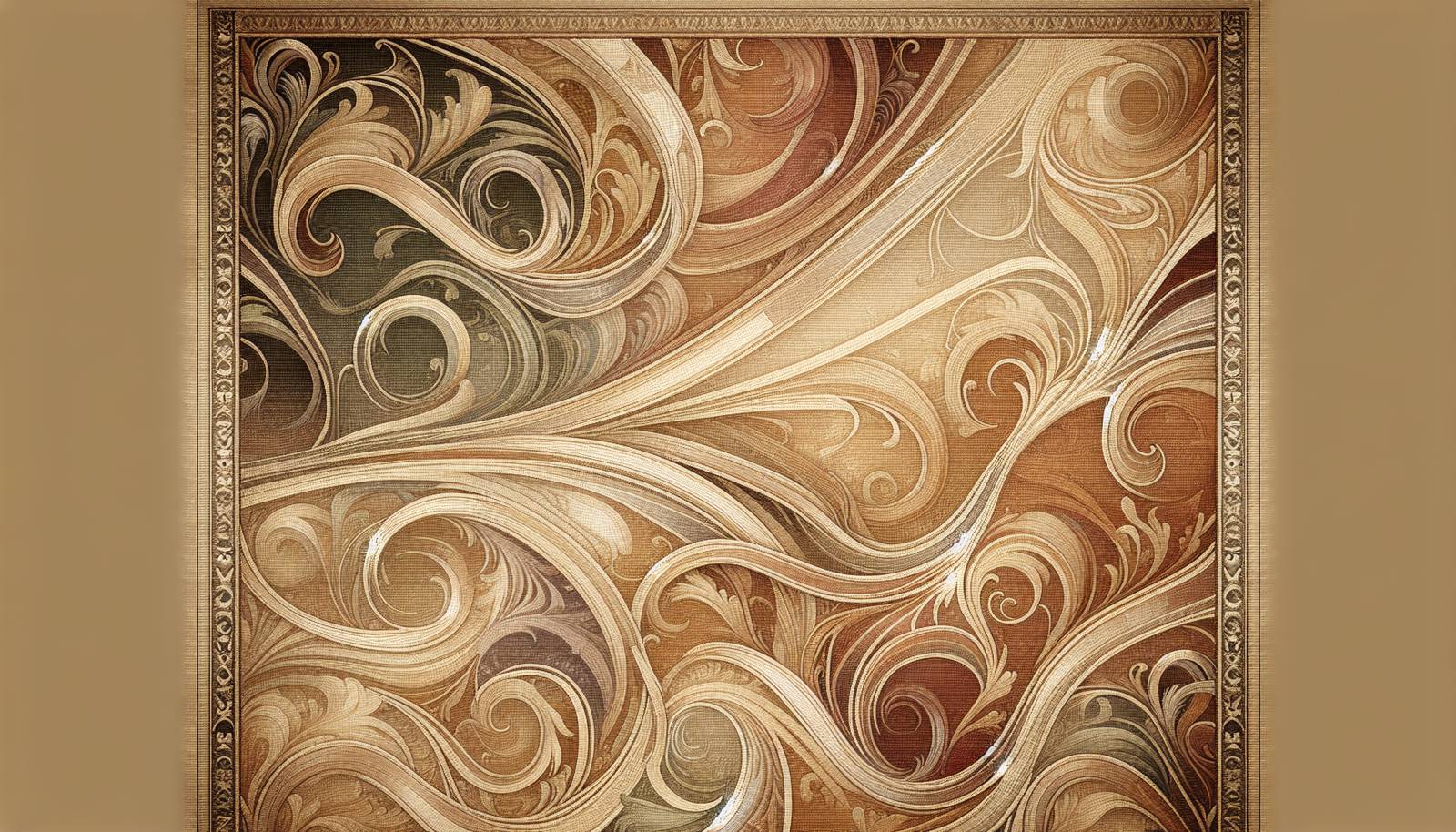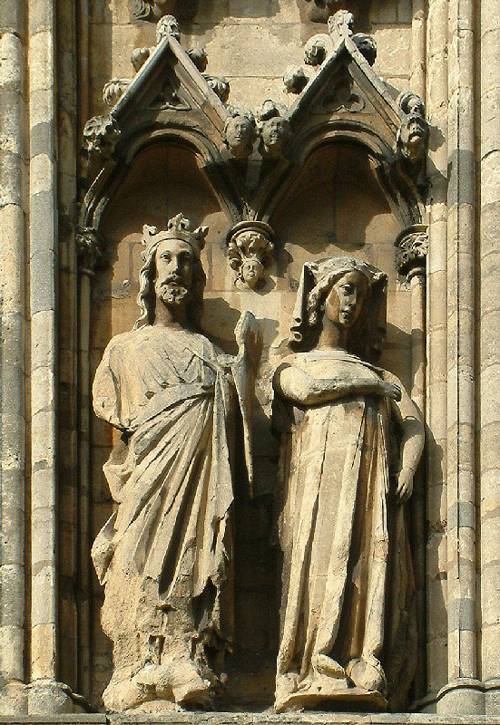
FAQ About Eleanor of Castile

Who was Eleanor of Castile?
Eleanor of Castile was the first wife of King Edward I of England, serving as Queen consort from 1272 until her death in 1290. She was born in 1241, the daughter of Ferdinand III of Castile and Joan of Ponthieu. Eleanor is known for her role in supporting her husband during his reign and her significant political influence in medieval England.

What influence did Eleanor of Castile have on medieval politics?
Eleanor of Castile had a notable impact on medieval politics, particularly through her marriage to Edward I. She was involved in various land transactions and administrative duties, demonstrating her influence in managing estates and her acumen for financial management. Eleanor accompanied Edward on his military campaigns, indicating her active role in political matters of the time.

What are the 'Eleanor Crosses'?
The 'Eleanor Crosses' are a series of twelve stone monuments erected by King Edward I in memory of his wife, Eleanor of Castile. These crosses were placed at the locations where her funeral cortège rested on its way from Lincoln to London between 1290 and 1291. The crosses symbolize her status and the immense grief Edward felt over her death. Only three of these crosses remain largely intact today.

How many Eleanor Crosses are still standing?
Of the original twelve Eleanor Crosses, only three remain substantially intact: the crosses at Geddington, Hardingstone, and Waltham Cross. These structures stand as historical monuments testament to medieval architecture and the commemoration of royal figures.

When did Eleanor of Castile live?
Eleanor of Castile was born in 1241 and passed away on November 28, 1290. During her lifetime, she was actively involved in the politics and administrative affairs of England as Queen consort.

How did Eleanor of Castile contribute to the economy of England?
Eleanor of Castile played a significant role in the English economy through her management of lands and properties. Her investments in property and the settlement of disputes bolstered her economic influence. Her acumen for estate management helped increase the crown's wealth and demonstrated women's active participation in medieval economic life.

Where was Eleanor of Castile buried?
Eleanor of Castile was buried in Westminster Abbey, London. Her heart, however, was interred separately at Blackfriars in London, while her viscera were buried in Lincoln Cathedral, making her burial reflective of the practice of separating royal remains in the Middle Ages.

Did Eleanor of Castile have any children?
Yes, Eleanor of Castile and Edward I had at least sixteen children, though many did not survive infancy. The most notable among their children was Edward II, who succeeded Edward I as king of England. Their large family reflects the importance of securing dynastic continuity during their reign.

How did Eleanor of Castile die?
Eleanor of Castile's exact cause of death is not conclusively documented, but she died on November 28, 1290, likely from an illness. Her death deeply affected King Edward I, leading to the erection of the Eleanor Crosses as a tribute to her memory.

Was Eleanor of Castile involved in the Crusades?
Yes, Eleanor of Castile accompanied her husband, Edward I, on the Ninth Crusade to the Holy Land in 1270-1271. Her presence on the crusade signifies her supportive role and involvement in the major political and military enterprises of her time.

What was Eleanor of Castile's early life like?
Eleanor was born in 1241 in Castile, present-day Spain, into a royal family. She was the daughter of Ferdinand III of Castile and Joan of Ponthieu. Raised in a courtly environment, she was educated in languages and governance, preparing her for her future role as a queen consort.

Why are the Eleanor Crosses significant?
The Eleanor Crosses are significant as tributes to Eleanor of Castile and as examples of the lavish commemorations typical of the medieval period. They would influence other memorials and highlight the deep personal and political connection between Edward I and Eleanor, symbolizing royal devotion and mourning practices.

What materials were used to build the Eleanor Crosses?
The Eleanor Crosses were crafted primarily from stone, often incorporating intricate Gothic designs, which featured carvings depicting Eleanor herself. These materials and styles were chosen to endure over time and to display the artistry and architectural skill of the medieval craftsmen who created them.

What was Eleanor of Castile's relationship with Edward I like?
Eleanor and Edward I shared a reportedly close and affectionate relationship, unusual for royal marriages of the period which were often politically motivated. Their mutual respect and partnership were reflected in their joint administrative efforts and the extent of Edward's mourning manifested in the construction of the Eleanor Crosses.

Did Eleanor of Castile speak English?
While there is no direct evidence of Eleanor's proficiency in English, as a native of Castile she would have spoken Castilian, a dialect of Spanish. As with many queens of the time, it is likely she acquired at least some understanding of English to fulfill her role at the English court.

What was Eleanor of Castile's legacy?
Eleanor of Castile is remembered for her influential role as a queen consort, her contributions to the English economy, her involvement in the Crusades, and the lasting memorials of the Eleanor Crosses. Her legacy continues to be studied within the context of medieval history and royal dynamics.

Did Eleanor of Castile have any hobbies or interests?
Eleanor of Castile was known for her interest in literature, the arts, and property management. Her extensive land acquisitions and involvement in financial affairs suggest she had a keen interest in real estate and economic matters beyond traditional courtly pursuits.

How did Eleanor of Castile support Edward I's rule?
As queen consort, Eleanor supported Edward I's rule through her active participation in administrative and financial matters, their joint endeavors in the Crusades, and her unwavering presence at court. Her guidance and management of affairs during his campaigns exemplified her support and influence in his reign.

Are there any myths or misconceptions about Eleanor of Castile?
One common misconception is that Eleanor of Castile was merely a passive queen with limited political influence. In reality, she played a crucial role in managing lands and participating in political affairs. Her active involvement contradicts the stereotype of queens being purely ceremonial figures.

How was Eleanor of Castile commemorated by contemporary writers and after her death?
Contemporary writers praised Eleanor of Castile for her piety, intelligence, and loyalty. After her death, her commemoration continued not only through the Eleanor Crosses but also in chronicles and romanticized accounts, emphasizing her dedication to Edward I and her role in the English court.
